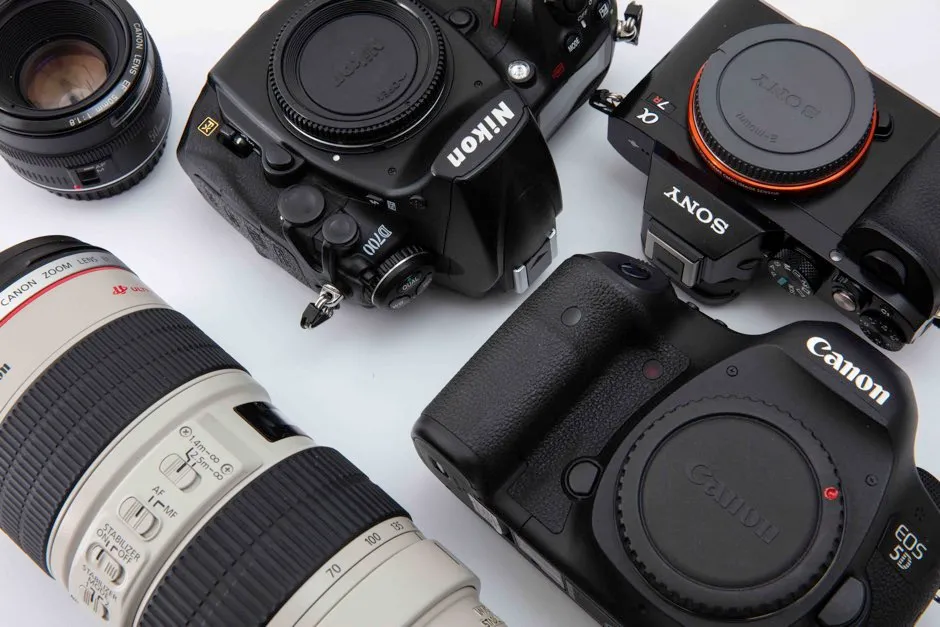1
Know the basics
Do you know the basic technique for photographing the night sky? It’s all about taking long exposures. With a DSLR or mirrorless camera on a tripod, put as wide-angle lens as you can get on manual focus, set it to infinity focus (the ∞ symbol), and set the aperture to as open-wide as it can get. That’s the lowest number it will go to (typically f/4.5 or f/2.8).
Now choose ISO 800 and take a long exposure for about 20-25 seconds, recording it in a raw format for a large file size (a SanDisk Extreme memory card is handy here). If the photo is too dark, swap to ISO 1600, ISO 3200 or higher.
Whatever camera you get, learn how to operate in a blackout, and understand that whatever you see on your camera’s LCD screen can be vastly improved upon in Photoshop.
2
Find a dark sky
Capturing stars doesn’t have to be daunting, but it does have to be dark. Astrophotography is the art of collecting limited light – that of distant stars – which can be blotted-out easily by light pollution.
The darkest locations include International Dark Sky Parks, International Dark Sky Reserves and Dark Sky Discovery Sites.
However, the trick isn’t just to avoid artificial light. Many beginners forget all about one big light-polluter that can ruin astrophotography; the Moon. It bleaches the night sky considerably, so avoid the week or so either side of the full Moon.
Useful apps include ‘ Dark Sky Finder’ and ‘Light Pollution Map’.
3
Capture the milky way
In the UK, the best time to capture the Milky Way is from May through to October. Prepare for summer by choosing a full-frame DSLR camera like Canon’s EOS 6D Mark II or the very latest and greatest Nikon Z6, Canon EOS R or Sony Alpha A9, which have very high ISO to detect more light while retaining a clean image.
You can up your chances even further by using a wide-angle lens. Good pairings include the Fujifilm X-T3 and the Fujifilm 16mm f1.4 R WR lens, the Nikon Z6 and Nikon Nikkor Z 24mm f/1.8 S lens, the Canon EOS R and a Samyang MF 14mm f/2.8 (Canon RF Fit) lens. Or there’s the cream of the crop: the Sigma 14mm f/1.8 DG HSM Art lens for Canon, Nikon and Sony DSLR cameras.
When summer arrives you’ll be ready to try for the bright heart of the galaxy. Download the brilliant ‘PhotoPills’ to help you line-up a shot in advance.
4
Create a star-trail
It’s perhaps the most intoxicating kind of astro-photo out there, and it’s easy to do. With your camera pointed towards Polaris, the North Star, you can take multiple images that record how the positions of the stars gradually shift. Since Earth’s axis is pointed straight at Polaris, every other star will appear to make concentric circles around it.
The trick is to keep your camera absolutely steady while you take an identical image 100 times (or more), then use the free StarStaX stacking software to create one mesmerising star-trail image. Get a sturdy tripod like the Sachtler 4588 Speed Lock 75 Carbon Fibre Tripod, and use an intervalometer to make the entire process automatic.
While you wait beside your camera, a pair of Canon’s incredible 10x42 L IS WP Binoculars will give you an unrivalled view of star clusters, and even some distant galaxies.
5
Photograph the northern lights
The aurora borealis or northern lights are on every astrophotographer’s bucket list. The technique isn’t difficult. In fact, it’s almost exactly the same as taking any night-scape. Location and timing are everything if you’re to capture the effect of by charged particles from the Sun striking atoms in Earth’s atmosphere.
First, get yourself to the ‘aurora zone’ at around 64°-70° North latitudes; Iceland, southern Greenland, Lapland (the northern parts of Norway, Sweden and Finland), northern Russia, Alaska and northern Canada. Then wait until it gets dark … and hope for clear skies. You don’t need special equipment, but extra batteries (which run down quickly in the cold) can help.
- Find out more at MPB.COM
Your starter pack
MPB trades thousands of used cameras and lenses every week across Europe and the US, providing unrivalled access to a vast range of photo and filmmaking kit. MPB also checks, grades and photographs every single item, and adds a six-month warranty, so you can be sure of what’s in the box.

You can choose from some high-quality night photography gear. Take a look at just some of MPB’s top bundles:
- Fujifilm X-T3 + Fujfilm 16mm f/1.4 R WR: £819 (Excellent) + £639 (Good):£1,458
- Nikon Z6+Sigma 18-35mm f/1.8 DC HSM ART, Nikon Fit(FTZ adapter required):£1,299 (Excellent)+ £414 (Good) = £1,713
- Canon EOS R + Samyang MF 14mm f/2.8 - Canon RF Fit:£1,484 (Excellent)+ £229 (Excellent) = £1,713
- Sony Alpha A7S II+ Zeiss Batis 18mm f/2.8, E Mount: £1,289 (Good)+ £759 (Excellent) = £2,048
* Prices correct at MPB.com at time of publication
